So you’ve got a beautiful Calathea plant in your home for decoration.
If you’re excited to reveal it to your family, wait for a while. You can only describe the beauty of this plant, but you don’t know the aesthetics.
Talking about the significant benefits, the Calathea plant is a natural air purifier that can provide more oxygen concentration. Counting on, the plant is a natural moisturizer, a humidifier – helpful for dry skin, an eye-catcher, etc.

Fortunately, you can keep it anywhere. The plant is children and pet-friendly. There are no thorns, and it doesn’t produce harmful chemicals.
See below for a detailed explanation of Calathea plant benefits.
Table of Contents
Better Suited Conditions for Calathea Plant
To fully utilize the benefits, you first need to grow the plants properly.
Let’s look at the guide for the optimum growth of this beautiful pant.
| Factors Affecting Calathea Plant | Ideal Condition |
|---|---|
| Watering Requirement | Consistently requires moist soil. Once every two weeks in winter. |
| Soil | Moist but not soggy. Use a mixture of potting soil, charcoal, perlite, and orchid bark. |
| Sunlight | Bright but indirect exposure. |
| Temperature | Around 65-75° F. Not less than 50° F. |
| Humidity | Requires 50% or higher humidity. |
| Ferilizer | Use standard houseplant fertilizer once a month. |
| Repotting | Should be done once in two years. Requires medium grade fir bark. |
Is Calathea Plant Good for Indoors?
When you think of the Calathea, you should know it is an indoor plant. These plants are widely kept inside the room for decoration purposes.
As Calathea grows in tropical areas, it needs moist soil and an average of five hours of sunlight daily.
In addition, the plant grows in the dense forest, so it absorbs more sunlight quickly. As a result, the leaves of Calathea are greener compared to other plants.
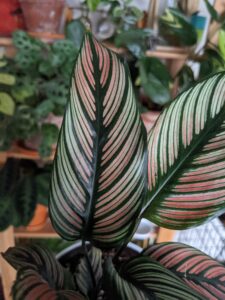
The plant keeps your room bright and helps you to get positive energy. You can place it anywhere – your table or cupboard. But don’t forget to put the plant where it gets sufficient sunlight.
Calatheas are generally considered good indoor plants because they are easy to care for. You don’t need much time to dedicate while growing a Calathea.
Furthermore, it doesn’t take much space. You can nurture a Calathea in a potting vessel of 1-2 inches in diameter.
Getting a Calathea is like having both hands full because you can get more benefits without spending much.
Calatheas can also be grown outside. But only under certain conditions. Assume you’re in America, where the climate is vastly different from Africa.
How can it thrive? As a result, it’s best to keep it inside your home.
7 Amazing Benefits of Calathea Plant
You probably already know a few benefits of the Calathea plant.
However, there are other benefits which you should account for. To obtain all these benefits, you should care for Cathalea as much as possible.
Here are the most common benefits of having a Calathea plant.
1. Increases Oxygen Concentration and Purifies Air
There are a few indoor greenery that is considered high oxygen providers. They have specific functions, mechanisms, or compounds that help purify the air.
Calathea also falls under this list; it is a plant that gives you oxygen even you are asleep.
According to Time, due to the photosynthesis process, the carbon dioxide in the air gets converted to oxygen. Also, they remove the harmful toxins from the air.
While keeping it inside your room, you feel fresh air every time. Another point to note is that the Calathea plant is more active at night and works in purifying air better at that time.
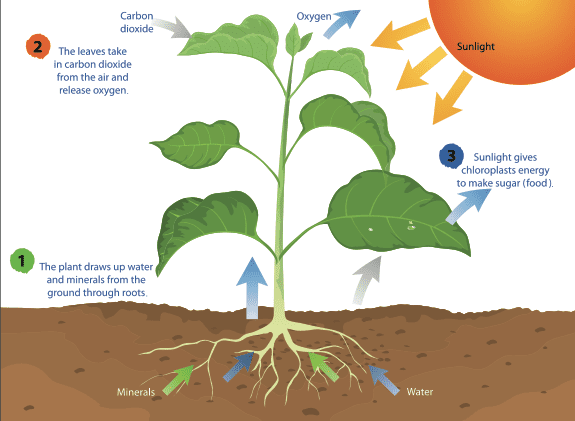
Moreover, the Calathea is an air-purifying plant; it helps to remove harmful toxins such as Formaldehyde and Benzene from the environment.
There are plants whose photosynthesis process ceases at night, and they take in oxygen while releasing carbon dioxide. Calathea is the polar opposite; it takes in carbon dioxide and releases oxygen.
Get a Calathea, and you are in for a good night’s sleep.
2. Ornamental and Decorative Look
Out of many motives to get an indoor plant, using them as a decorative piece is the most important.
What are the things you would look for in an indoor plant? Their care requirement? The price? Their benefits? Yes, you may.
But at the end of the day, no one would bring an ugly plant home.
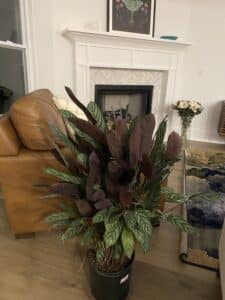
Calathea is one of the most intriguing plants in the looks department.
Their leaves are bright green, and the type of striations differ from plant to plant. Not only that, but they also have beautiful flowers that are sure to charm your eyes.
You can go for various Calathea and place them in any corner of your house to bring out the best.
A Calathea alone can brighten up any wall with its aesthetic vibes.
3. Boosts the Humidity Level
Many indoor plants help increase the moisture content in the air, thus increasing the overall humidity of the vicinity.
Calathea is no different; a healthy Calathea also works as a moisture booster in the surrounding.
Plants go through a process called evapotranspiration. In this process, the water in the soil transfers up from the stem to the leaves. The water evaporates from the leaves through stomata.

The leaves of Calathea are pretty good at trapping moisture from the surroundings as well.
Not every ounce of moisture is used by the plant. Some are released into the environment as well. So basically, it’s a give-and-take relationship.
According to researchgate.net, if the light intensity is increased to 300 μmol/(m^2)s, the relative humidity is also increased.
If you want your Calathea to be full of moisture the way it likes, you need to mist it with a spray can at least once a week.
So, during a dry summer day, you can rely on your Calathea to maintain the humidity around your house.
4. Calathea is Pet-friendly
Most indoor plants that look stunning have a problem; they are toxic.
But hey, Calathea is dying to challenge that case. It is one of those “beautiful” plants that does not have that toxicity.

It would be such a headache to keep your pets away from a plant if it was toxic. But you can rule out that possibility now.
According to ASPCA, the Calathea plant from Marantaceae is considered non-toxic to cats, dogs, and horses.
Your pets can play all day around with the plant, and they will not sustain any damage to themselves.
However, you may need to protect your Calathea from the pets though. Pets have fangs and long nails that can damage the plant’s foliage.
5. Calatheas are Dust Trappers
You must be so sick and tired of vacuuming your house every day because the dust particles won’t stop floating and settling inside your home.
Many plants have magical leaves that work to trap dust particles in the air. Calathea is one of them.
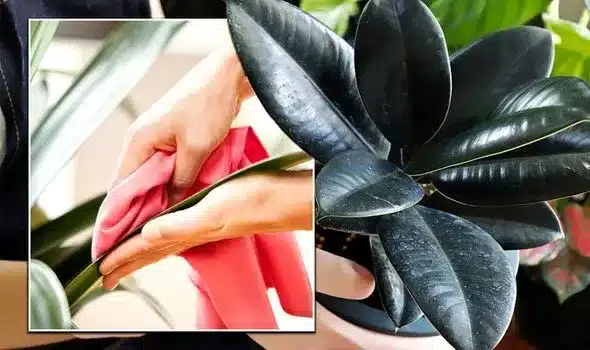
Well, if you just got a Calathea plant, you are in for a treat.
Calathea has large and waxy leaves that are very efficient in trapping dust around your house. Not only dust, but they also trap Particulate Matter (PM).
Particulate Matters are the combination of solid materials like dust, smoke, and, dirt with liquid materials. PMs are visible to naked eye.
After that, it is just easy. You can wipe the dust off the leaves, and boom! Your plant is clean again.
Not only that, your house stays clean too. It is a straight-up win-win, right?
6. Stress Reliever
It is next to impossible never to have stress all your life as a human being. Whether at home, office, or college, everyone is prone to stress.
But there is a lesser-known fact. Looking at or growing a green plant tends to reduce your stress levels.
According to the National Library of Medicine, if you have plants in your home, you will feel more relieved and comforted.
Calathea is also known to relieve the stress factor. This may sound absurd, but looking at this plant for a few minutes only can relieve the stress from the hard and long day at the office.

Calathea may even keep your blood pressure and heart rate in check.
A horticultural therapy program has shown that indoor plants are great assets in reducing depression and anxiety.
7. Improves Focus and Productivity
If you are a student or an employee in any organization, you know how crucial maintaining focus is.
Well, we have good news for you. If you bring a Calathea plant near your study table or workspace, you will be able to focus better.

Don’t want to believe us? We have done our research for you to see.
According to IJERPH, few elementary students had an increased level of concentration and focus on studies when a plant was placed near them.
So basically, if you are having a hard time focusing and channeling your attention, bringing in a Calathea may help you.
Health Considerations to Keep in Mind
Few indoor plants can be harmful to humans and pets. For example, some cactuses have thorns in them. Their spikes and needles can make hurt your loved ones.
On the flip side, Calathea plants are considered safe and non-toxic for humans and pets. Although there are different species of Calathea, you don’t need to worry about all of them.
As we know, we have to take care of this plant. Sometimes, we have to use nitrogen, potassium, and sodium fertilizers.
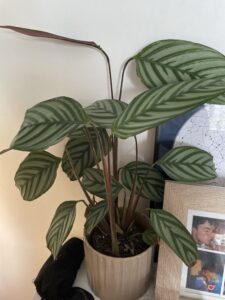
But, if anyone touches it directly and takes their hands inside their eyes, mouth, or nose, it can be dangerous. Hence, you should notify everyone when you put the fertilizer.
Calatheas are ideal indoor houseplants. Your pets may hop inside to get the fresh air. Don’t let your pets nearby the plant for a few days after putting the fertilizers in.
In addition, you may not want minor bugs in your home, but Calathea may attract them.
These small bugs prefer humid environments and may be attracted to them. So, if you don’t want pests running around your house as if they own it, you’ll have to learn how to control them.
Watch the video to get more information about Calathea,
Conclusion
Calathea plants can be beneficial in different ways. It can make your house look good and has some other added benefits.
This plant is a perfect example of the statement that “If you take care of nature, nature will also care for you.”
Good luck with your Calathea!
Read about the benefits of other plants too! Aglaonema, Jasmine, Bromeliad, Kale, Indoor Plants, Avocado, Monstera.
